I hope to use the exhibit to present a historical view of the First Baptist Church congregation as a community-based group through time and the Meetinghouse itself as a community gathering place. The artifacts and a small amount of primary source material will be presented to provide a cohesive picture of the First Baptist Church congregation as a community united not only through religion, but also through social interaction. Hopefully, the exhibit will provide the viewer with a glimpse of the diversity and social relationships that defined the congregation throughout its history. Below are some of the labels that will appear in the exhibit; photos of some of the artifacts are given, but not every artifact described is pictured.
Personal Effects
Personal effects found at the church provide us with an intimate glimpse of the past community members who owned the artifacts. The majority of personal effects recovered were small items that would have been easily lost and readily forgotten. The large number of small personal effects recovered from the churchyard shows that the First Baptist Church Meetinghouse was used by a great number of people and functioned as a community gathering point throughout its history.
Marbles
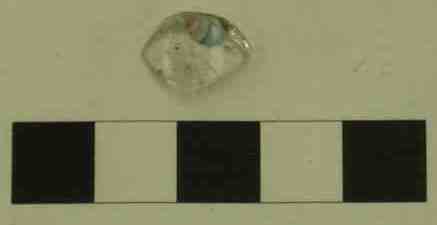
Above are three marbles found in the churchyard. Two of the marbles are broken and are made of glass. The complete marble is made of china with a pinwheel design, and was manufactured between 1846 and 1870. The marbles indicate the presence of families and children at play during church gatherings.
Buttons
Buttons are easily lost, so it is not surprising that a number of buttons were recovered around the Meetinghouse. The buttons shown above represent the range of buttons found: from simple white glass buttons to intricately designed metal buttons.
Coins
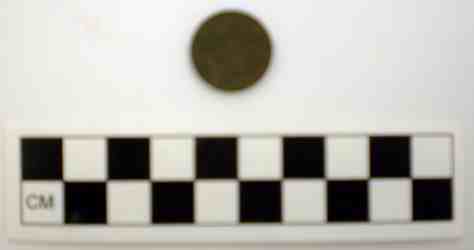
Several coins were found, and three are displayed above: (from left to right) A 1935 Mercury-type dime, a 1918 Lincoln Head, Wheat Ears cent, an 1899 Indian Head cent.
Clay Pipe Fragments
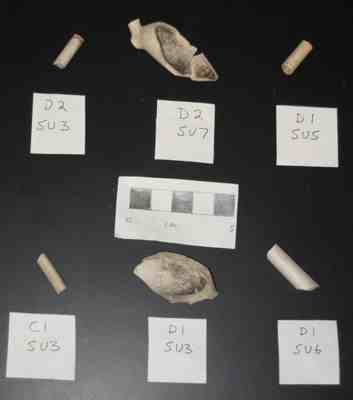
Pipes were the most popular means of tobacco consumption from the 17th through the 19th centuries. Clay pipes were fairly inexpensive and fragile, and it is therefore unsurprising that a number of pipe fragments were found throughout the churchyard. Displayed above are several pipe stem and bowl fragments. The large number of pipe fragments found indicates that people commonly gathered outside the church to relax and socialize.
Pin
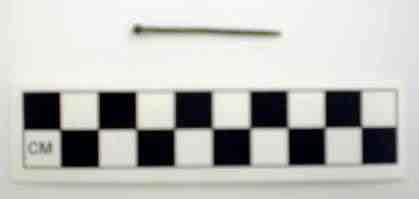
This pin was found in the churchyard and appears to be a sewing pin. Although not necessarily the case, the pin can be most obviously associated with a ladies' sewing group that met at the meetinghouse during the 19th century. The presence of the pin and the sewing group provide further evidence that the Meetinghouse functioned not just as a religious center, but as a community center where social and entertainment activities took place.
Miscellaneous Personal Items
Other personal effects found in the churchyard include a comb fragment and a glass stopper that appears to have come from a perfume bottle, or a small medicine vial.
Ceramics
Most of the ceramic fragments displayed here belonged to pieces of tableware such as plates, saucers, and cups, and provide evidence for eating at church social events. A large amount of fine ceramic tableware fragments were found in the churchyard, suggesting that church members brought their finest to church. We can learn about the diversity of the congregation and the College Hill community through time by looking at the range in the quality of ceramics found. In early America, high quality ceramics were a mark of success and high social class. The wide range of ceramics found in the churchyard indicates social diversity among people who used the church grounds, which is a reflection of the diversity of the surrounding community in early Providence.
Fine Tableware and Special Items
Just as people today wear their best clothes to church, church members in the past brought their finest tableware to church social events. Displayed above are two of the finest examples of tableware found in the churchyard as well as a reconstructed knob from the top of a sugar bowl. Both decorated ceramic fragments are hand-painted European porcelain. The curved piece was once part of a teacup and was produced between 1800 and 1850. The sugar bowl knob is made of pearlware decorated with a blue transfer print, and was made in England between 1807 and 1840.
Porcelain
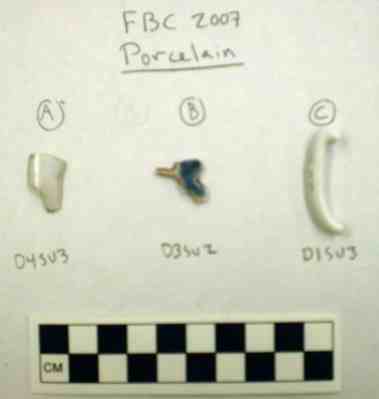
Above are several examples of porcelain fragments found in the churchyard, including the handle of a teacup and part of a lattice-edged plate. Porcelain is the finest and most expensive ceramic ware and generally would have been available only to wealthy church members.
Ironstone
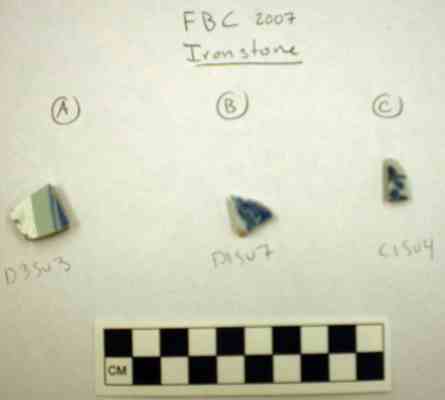
Ironstone ceramic was first produced in the early 19th century. Displayed here are three small examples of blue-glazed ironstone.
Stoneware
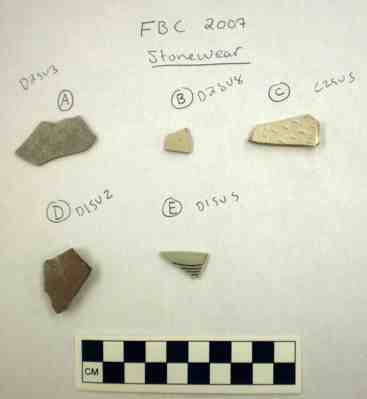
Stoneware was a relatively durable, affordable alternative to porcelain. The stoneware shown here is relatively plain, with little decoration, and so would have been affordable for a family of modest means.
Refined Earthenware
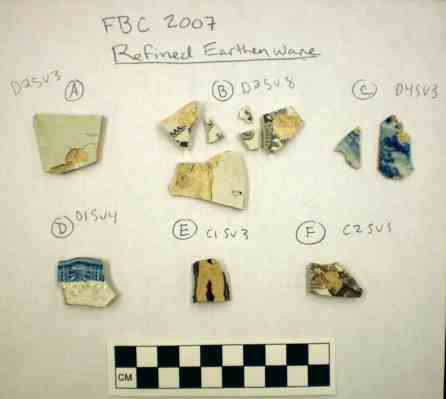
Earthenware is one of the poorest quality ceramic wares. The examples shown here are refined, meaning the exterior was glazed and decorated, giving the outward appearance of fine tableware. The designs on most of the above examples were made using the relatively inexpensive transfer printing technique, invented in 1751. The presence of refined earthenware in the churchyard suggests that some church members could not afford higher quality tableware. Even so, most of the refined earthenware found in the churchyard was decorated, again showing that church members brought their finest tableware to church.
Earthenware
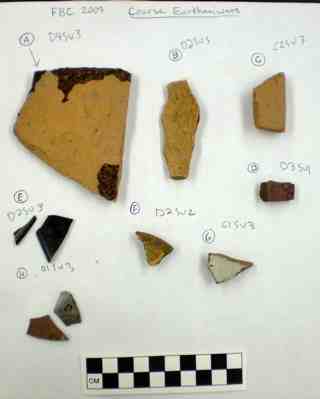
Plain earthenware is a coarse, porous, and poor quality ceramic. However, it was the most common day-to-day ceramic during the colonial and early America periods. The above examples of earthenware are mostly undecorated and represent the least expensive tableware found at the site. Plain earthenware was, however, the least common ceramic type found on the church grounds, suggesting that plain or everyday tableware was not used at church functions.
Faunal Remains
A large amount of shells and animal bones were recovered from the church grounds. These remains provide us with information about what was eaten at church social events, and also indicate that organized social events like picnics and clambakes were important to the congregation.
Shells
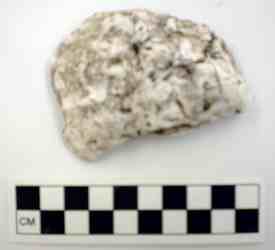
A number of clam and oyster shells were recovered from the church grounds. Several examples are shown above. Shown also is an 1898 advertisement for a clambake at the Hornbine Baptist Church in Rehoboth, located just over the border from Providence in Massachusetts. Although the clambake was originally a Native American activity, it became a New England tradition during the colonial period. As shown by the 1898 advertisement, New England churches commonly held clambakes, and the shells found at the First Baptist Church are most likely refuse from a church clambake.
Animal Bones
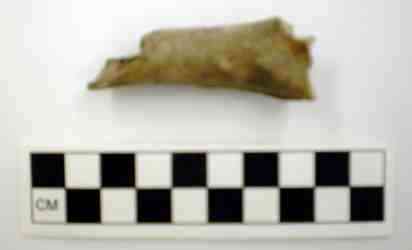
A large number of animal bones were recovered, some of which are displayed above. Although the bones have not been conclusively associated with a specific species, they came from several medium to large sized mammals, such as pigs, deer, and cattle. The bones suggest that meat was prepared and served at the church, presumably as part of a church picnic.
The Display Case
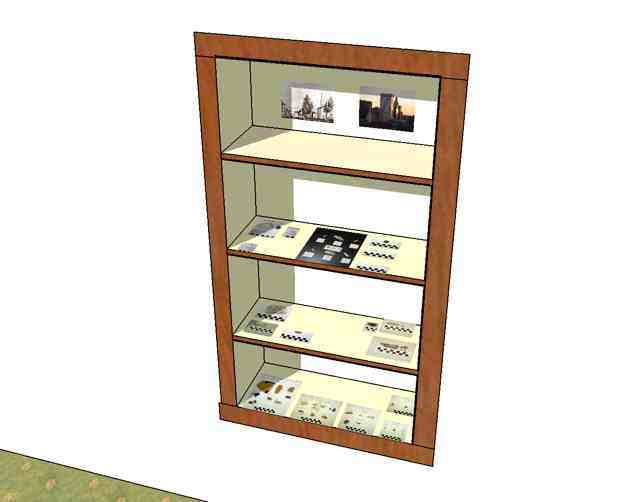
This is a roughly scale model of the display case that will house the exhibit; The display case is located in the ground floor lounge of the Joukowsky Institute.
